Geology > QUESTIONS & ANSWERS > ESS 101 INTRO TO GEOLOGY - University of Washington_ Laboratory 5A : Sedimentary Rock Formation. Fal (All)
ESS 101 INTRO TO GEOLOGY - University of Washington_ Laboratory 5A : Sedimentary Rock Formation. Fall 2022. Score for this attempt: 9.5 out of 10
Document Content and Description Below
ESS 101 INTRO TO GEOLOGY - University of Washington_ Laboratory 5A : Sedimentary Rock Formation. Fall 2022. Score for this attempt: 9.5 out of 10 In the igneous rock lab, we focused on tectonic proces... ses that influence rock formation inside of the earth’s crust. Now we will turn to the earth’s surface, where rock weathers into smaller rock fragments and minerals. The solid particles and dissolved ions (charged atoms and molecules) freed by weathering processes are transported by water, wind, gravity, and glaciers from their source (that is, the original rock) to depositional basins (the places where sediment accumulates). This collection of loosely packed, unconsolidated mineral or rock fragments is called sediment. In time, sediment is buried and lithified to form2/20/22, 10:41 PM Laboratory 5A : Sedimentary Rock Formation: ESS 101 B Wi 22: Introduction To Geology And Societal Impacts https://canvas.uw.edu/courses/1515924/quizzes/1604208 3/48 sedimentary rock. Careful examination of the mineral composition and texture of many sedimentary rocks provides clues to the: (1) original source of the sediment (provenance); (2) type and extent of the weathering processes by which the source rock was broken down; (3) agent (water, wind, gravity, or ice) that transported the sediment and, in some cases, the duration of transport; (4) physical, chemical, and biological environment in which the sediment was deposited, and; (5) changes that may have occurred after deposition (diagenesis). Sedimentary rocks are a window into ancient environments. They contain traces of evidence that reflect what the earth was once like. For example, fossilized bones in some sedimentary rocks show that dinosaurs once roamed the earth. Therefore, the characteristics of a sedimentary rock reflect the environment in which that rock formed. The texture, size and shape of sedimentary clasts (or rock fragments) can tell us about the environment in which a sedimentary rock formed. For example, if the clasts that make up a sedimentary rock look like rounded river rocks, then we might conclude that that sedimentary rock formed in a riverbed (Figure 5-1). Figure 5-1 Rounded rocks in a conglomerate, a type of sedimentary rock that usually forms in a river environment. [Show More]
Last updated: 1 year ago
Preview 1 out of 48 pages
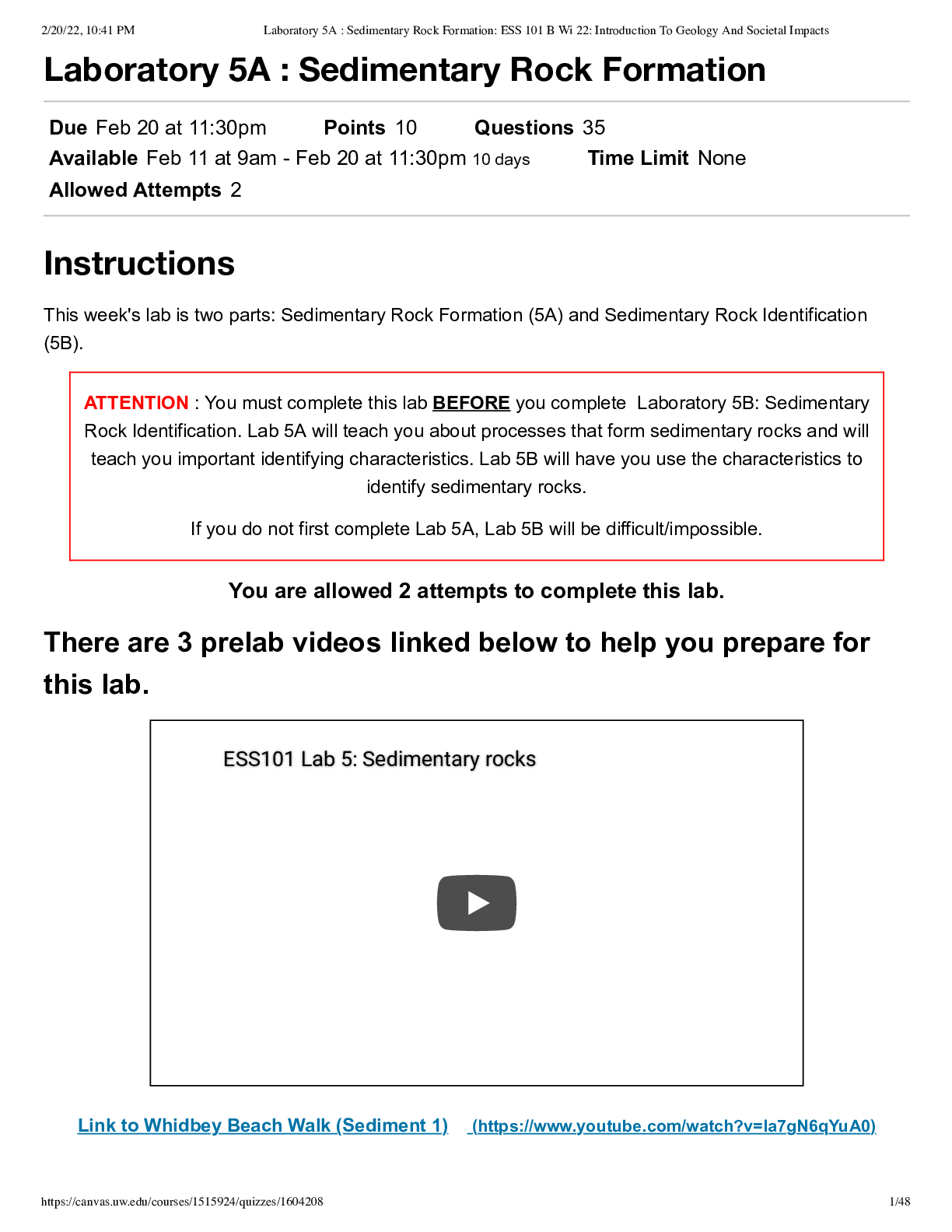
Buy this document to get the full access instantly
Instant Download Access after purchase
Buy NowInstant download
We Accept:

Reviews( 0 )
$10.50
Can't find what you want? Try our AI powered Search
Document information
Connected school, study & course
About the document
Uploaded On
Apr 17, 2023
Number of pages
48
Written in
Additional information
This document has been written for:
Uploaded
Apr 17, 2023
Downloads
0
Views
90

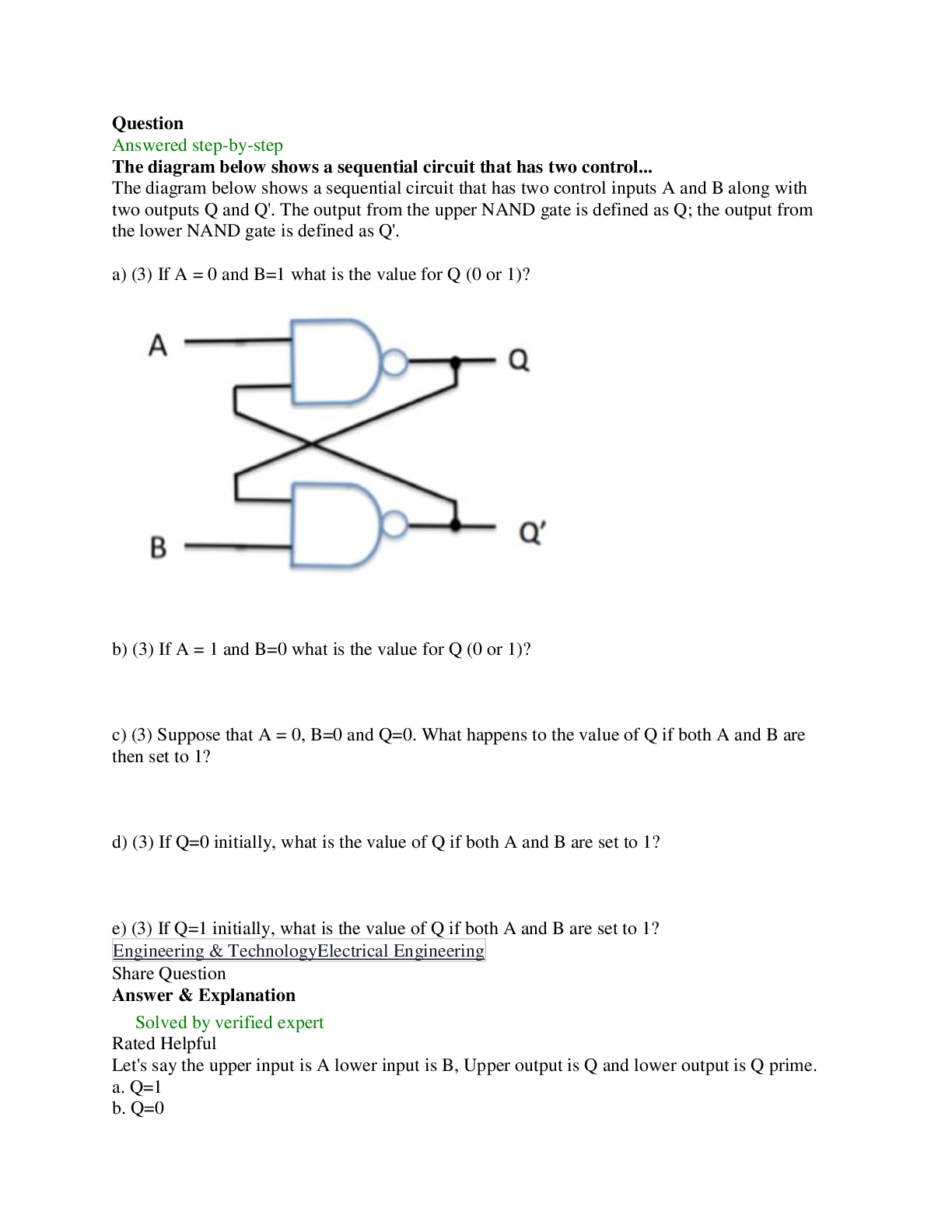
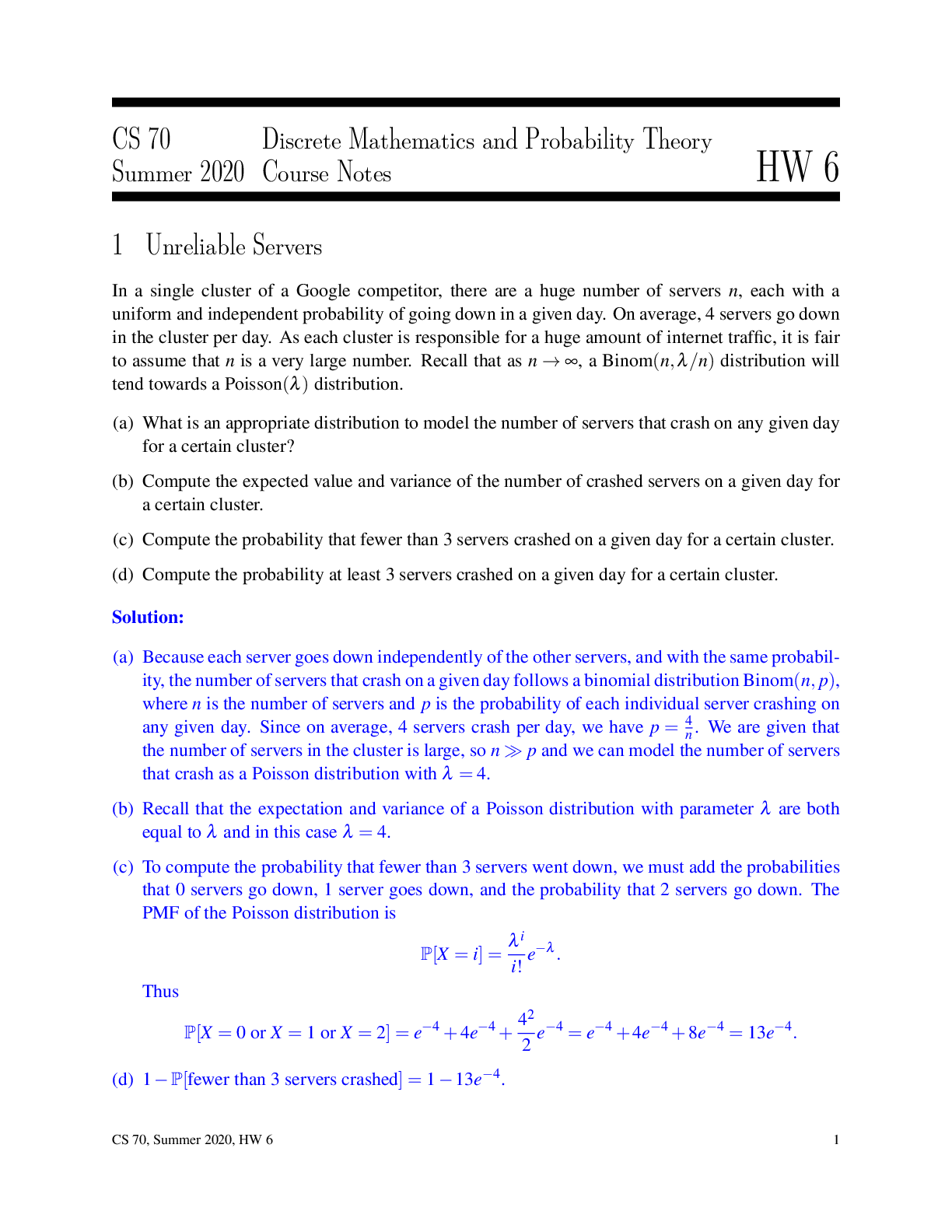
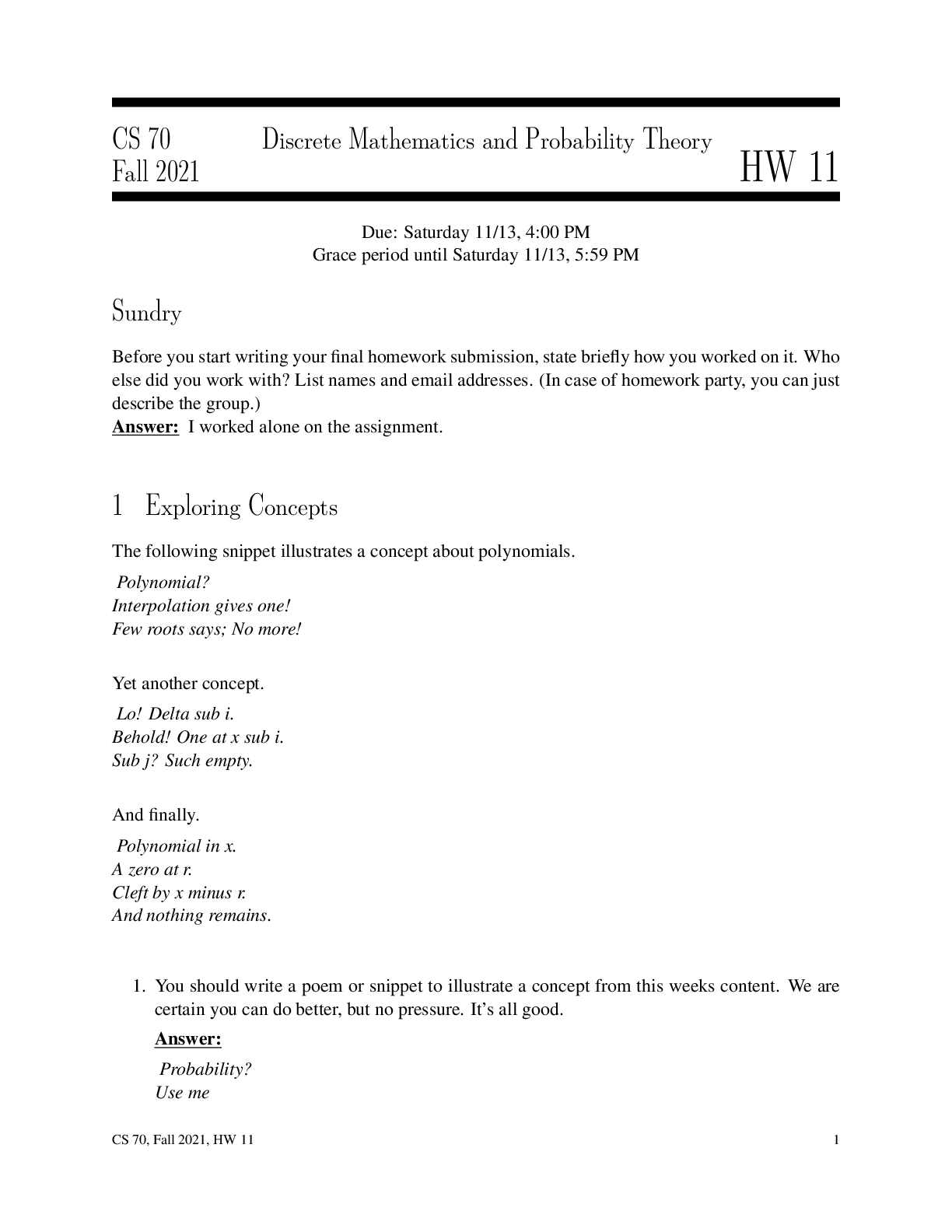
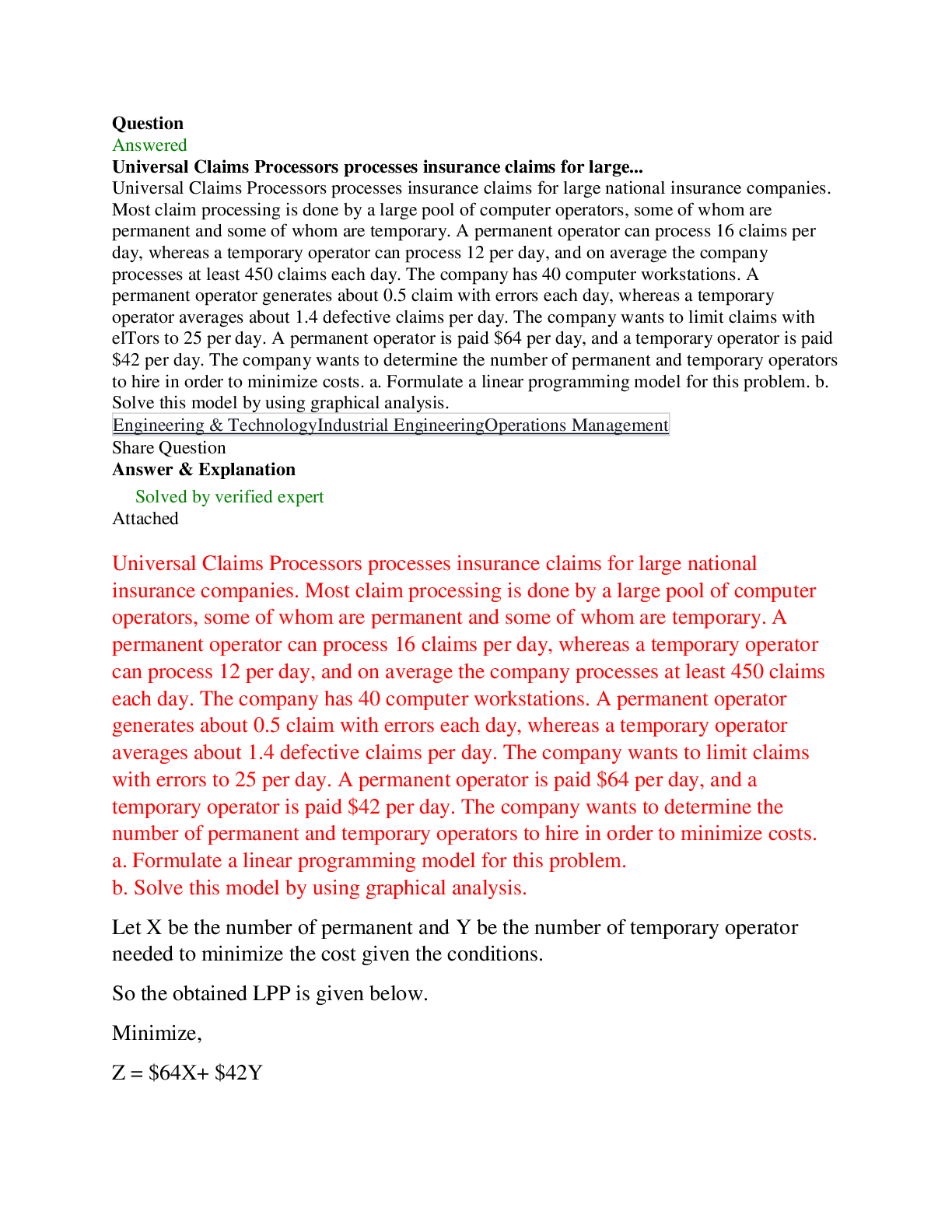



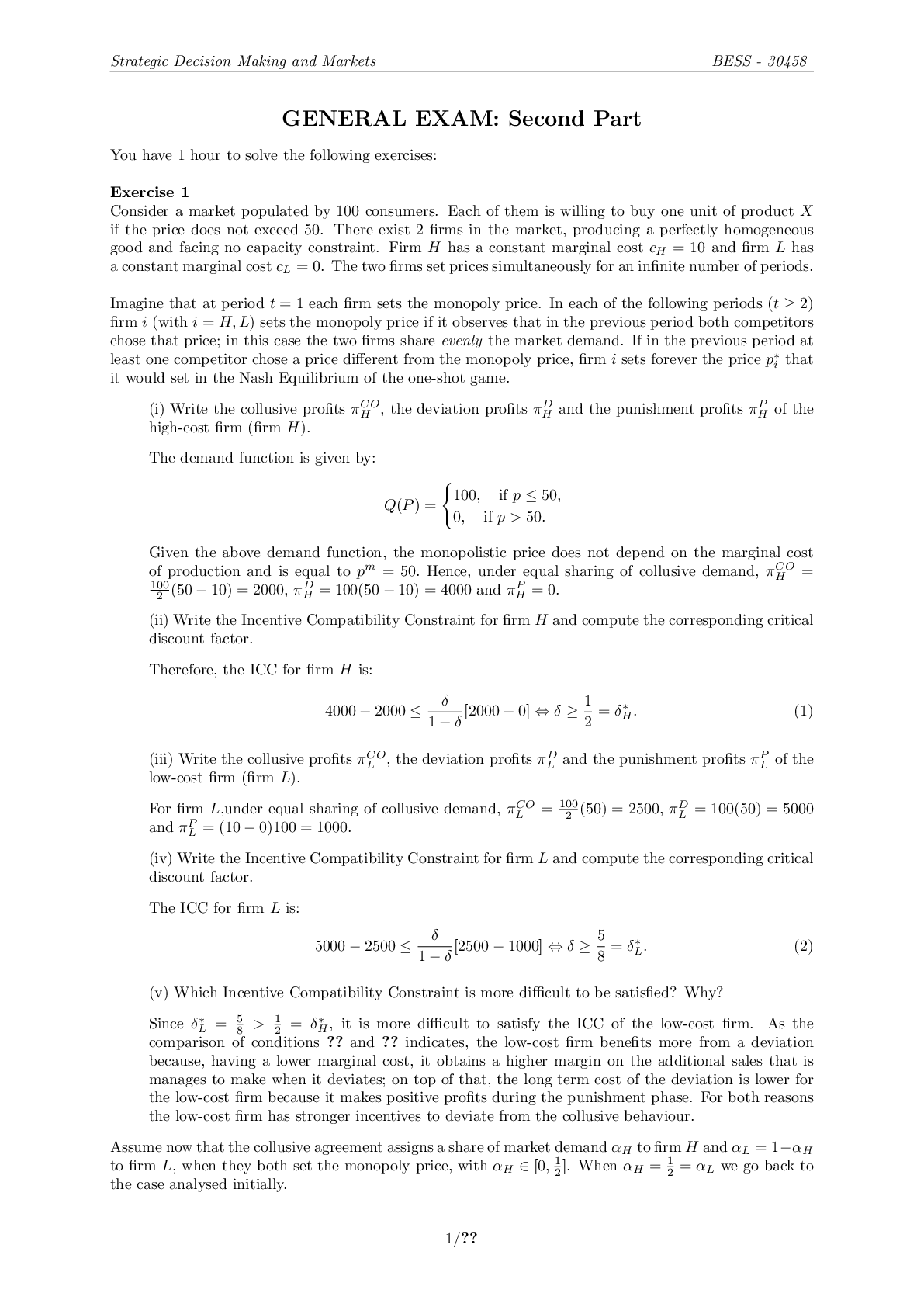
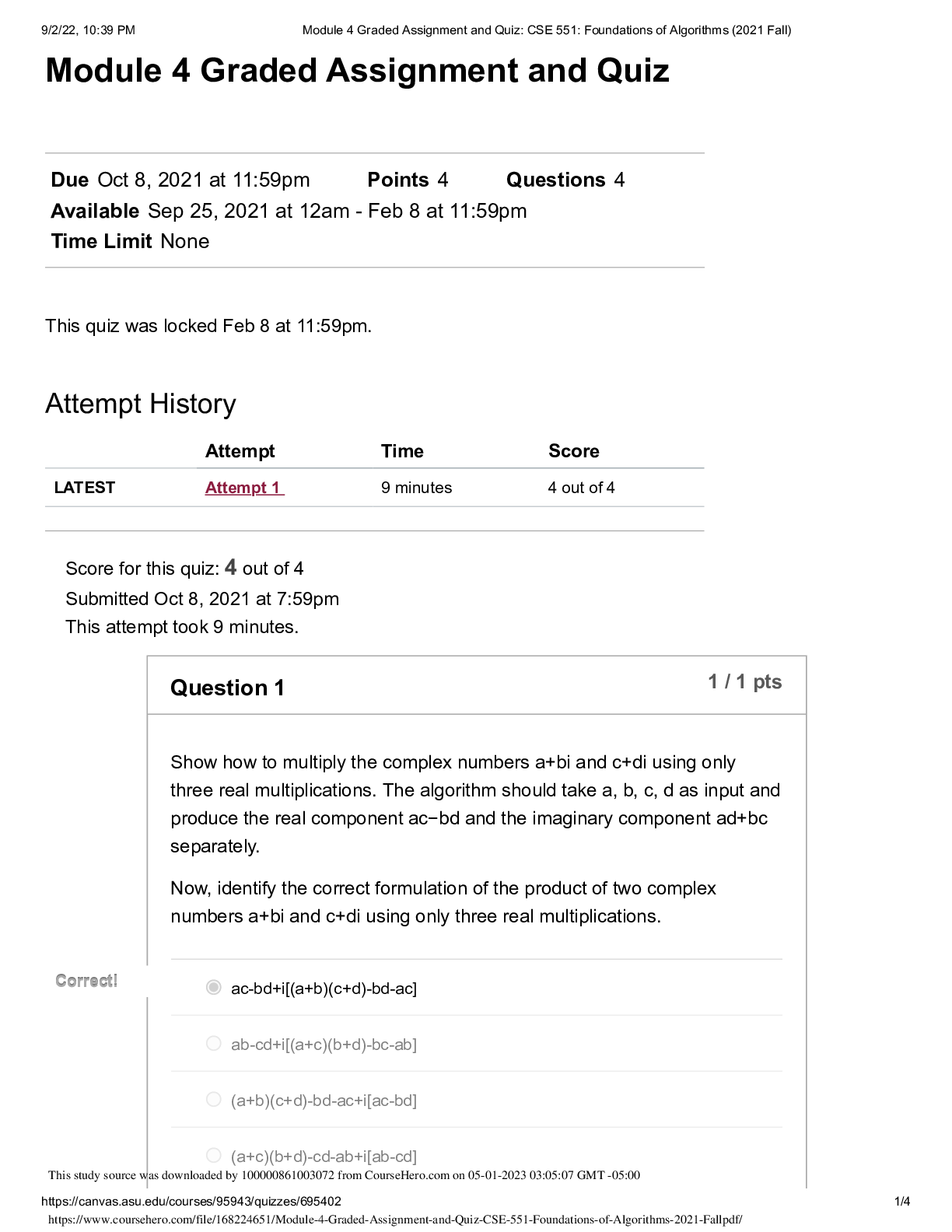
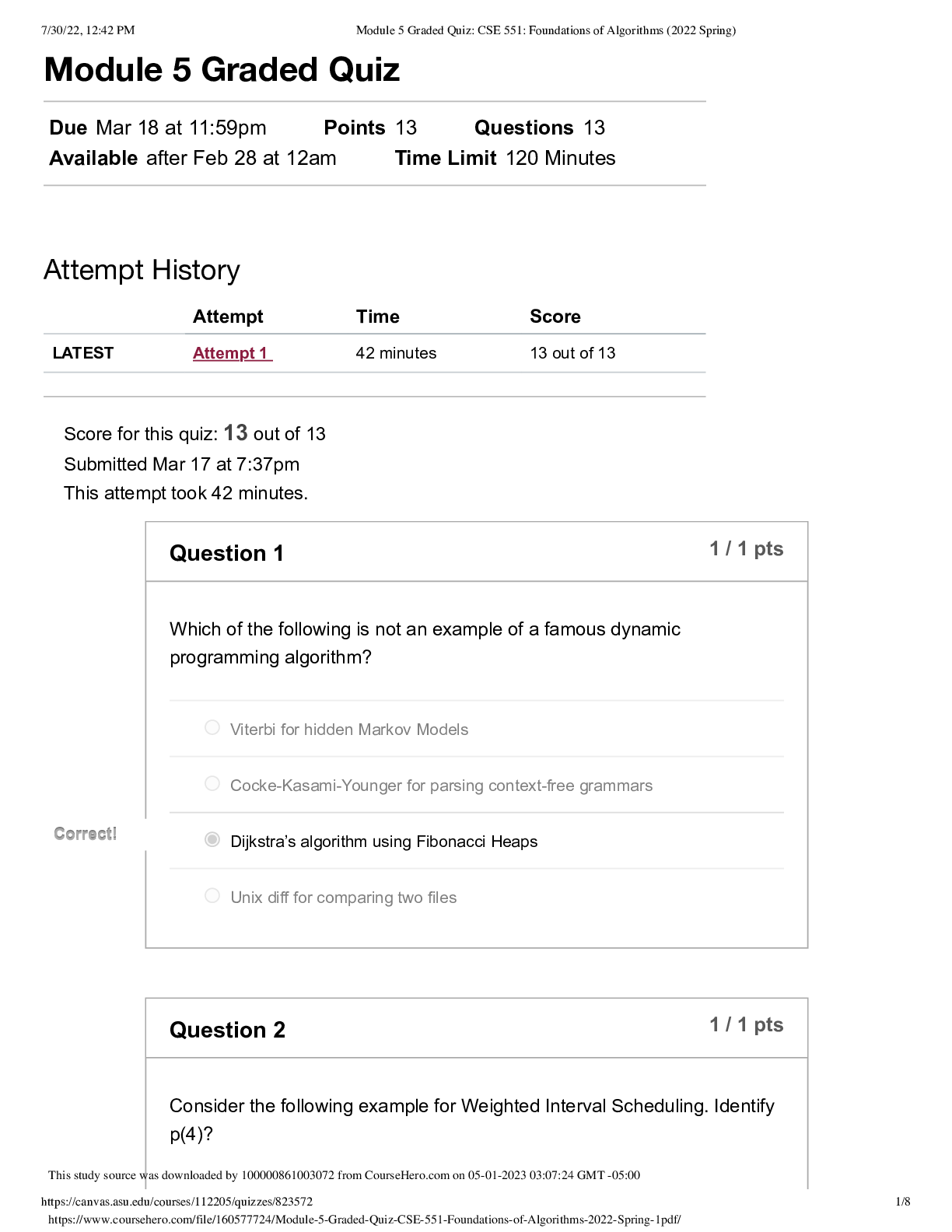

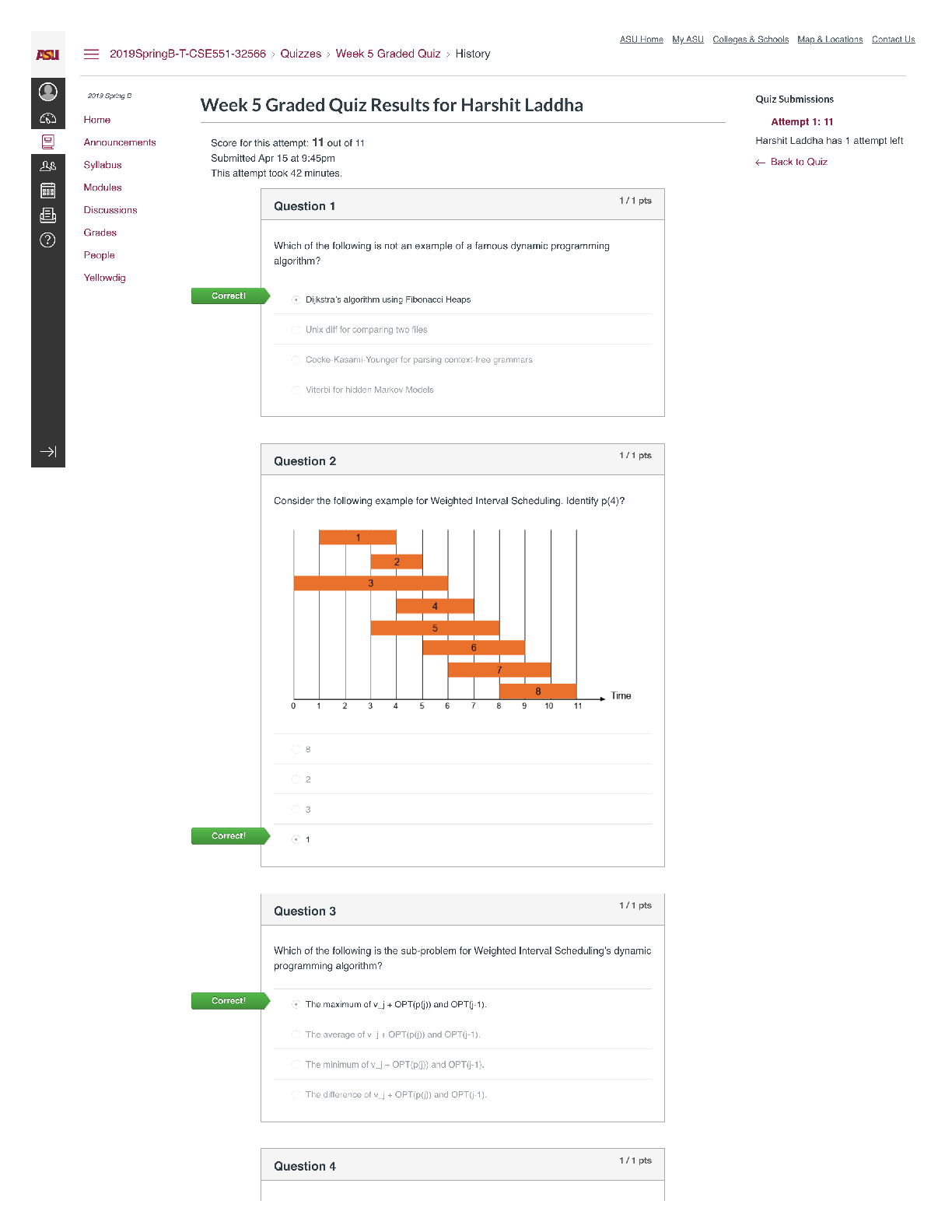



.png)


 nr507.png)






